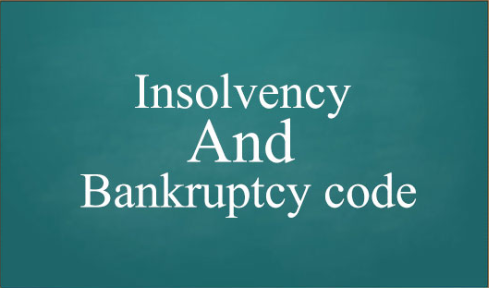Unintended Consequences of IBC
Insolvency and Bankruptcy Code (IBC) act was considered as a path breaking legislation which provided for a time bound resolution of insolvency and bankruptcy cases. The act was brought in to address the challenge of chakravyuha i.e. exit issues in the Indian economy . The issue was highlighted in the Economic Survey, 2016.
Features of the IBC Act:
The Insolvency and Bankruptcy Code aims to create an overarching framework for revamping or easy winding up of a business. The key features of this act are:
- The act proposes a timeline of 180 days to deal with the applications for insolvency resolution with an option of extending it by 90 days for exceptional cases.
- The act creates two separate regulators as follows:
- Debt Recovery Tribunal (DRT): It has jurisdiction over individuals and unlimited liability partnership firms
- National Company Law Tribunal (NCLT): it has jurisdiction over companies and limited liability entities.
- The act also established the Insolvency and Bankruptcy Board of India to oversee the insolvency proceedings and to regulate the entities registered under it.
- The insolvency process is to be managed by licensed professionals registered with the Insolvency and Bankruptcy Board of India.
The act was subjected to amendment in the subsequent years to address the various loopholes pointed from time to time. To address the mounting problem of NPAs, RBI had abolished half a dozen loan restructuring schemes and instead provided for a strict 180-day timeline to agree in case of a default on a resolution plan or else refer the account to be dealt with under the IBC. The critics highlight some of the unintended consequences of the act will adversely impact the financial health of financial institutions. The Supreme Court has stayed the RBI’s circular and asked banks not to initiate insolvency proceedings against the loan defaulting companies.
How IBC fared in these years?
- 1,300 insolvency professionals are registered under three insolvency professional agencies.
- More than 525 cases of corporate insolvency have been admitted across the National Company Law Tribunal (NCLT) benches.
- 108 voluntary liquidation proceedings have taken place.
Despite these overwhelming numbers IBC has failed in attaining its stated objectives. Two examples must be cited here:
- Of the first 10 cases for which resolution plans were approved under IBC, financial creditors were able to recover only 33.53 per cent of the total outstanding claims.
- Even though RBI initiated 12 large loan defaulters for IBC resolution, none of them could see resolution except two.
Further, the law has seen some of the unintended consequences. For example:
- The power sector has around 34 stressed accounts worth Rs 1.5 lakh crore. It is feared that the hair-cut that banks might have to take in the process of resolution would be around 85 per cent.
- There are very few players in the corporate sector that have the capacity and resources to raise capital and buy assets even at 35 or 15 per cent of their valuation. This underwriting will burden the banks and threaten their financial health.
- Steel and Power Sector, which houses the huge chunk of NPAs, has only two key players who can take part in resolution process.
- The parliamentary committee had said that 180 days to find an optimal solution and resolve is almost impossible. It further elaborates that when all such resolution process get into NCLT the pipeline will be choked and resolution will not be easy.
These unintended consequences have potential to destabilize the stressed sectors, financial institutions and the economy as a whole. Hence, it is time for Resolution 2.0 to address insolvency and bankruptcy challenges without compromising health of the economy.


